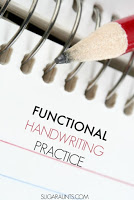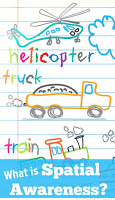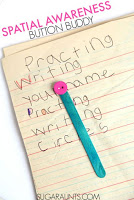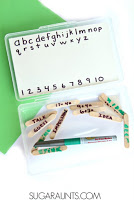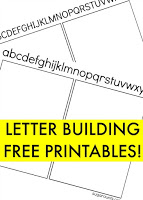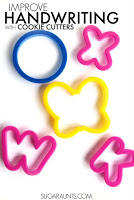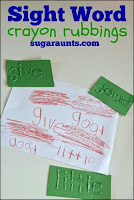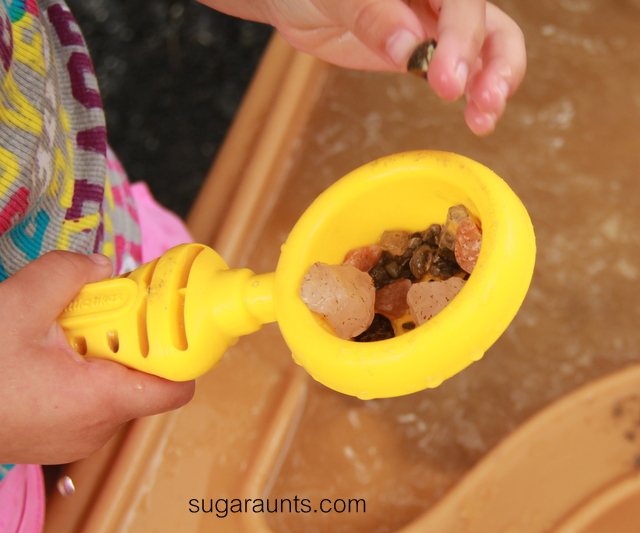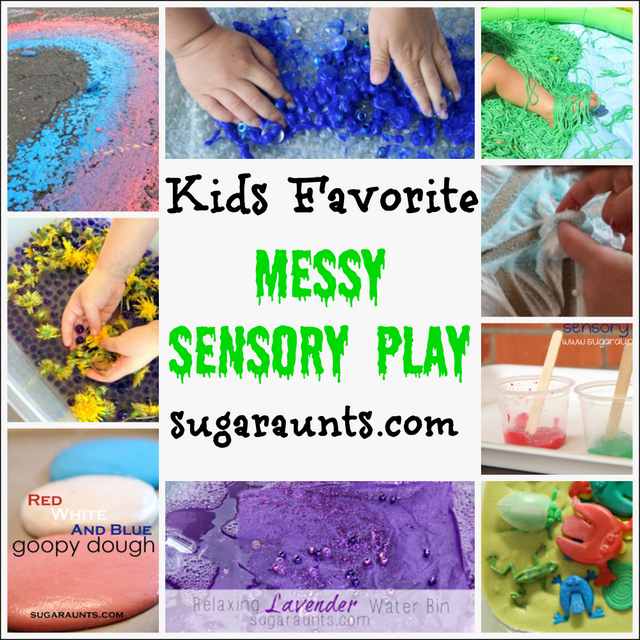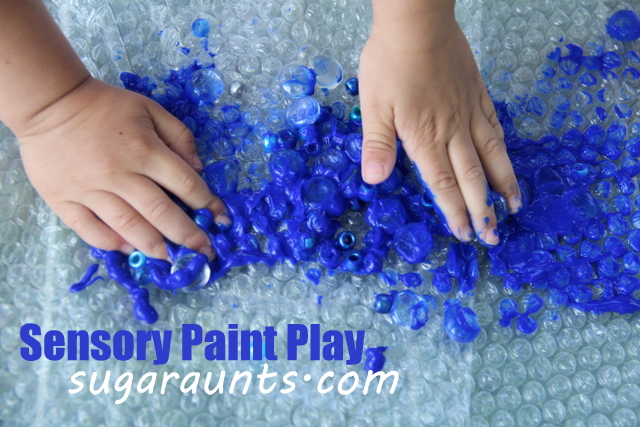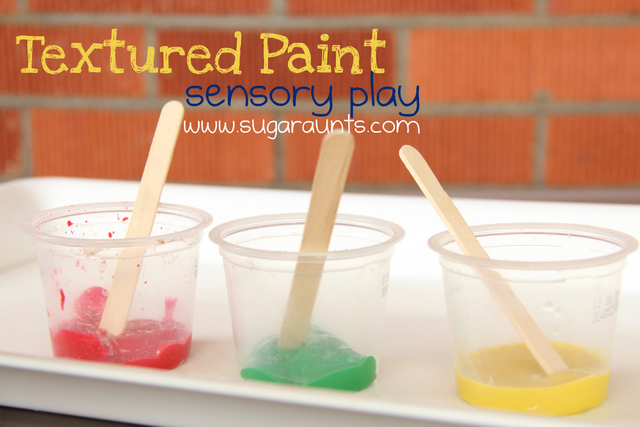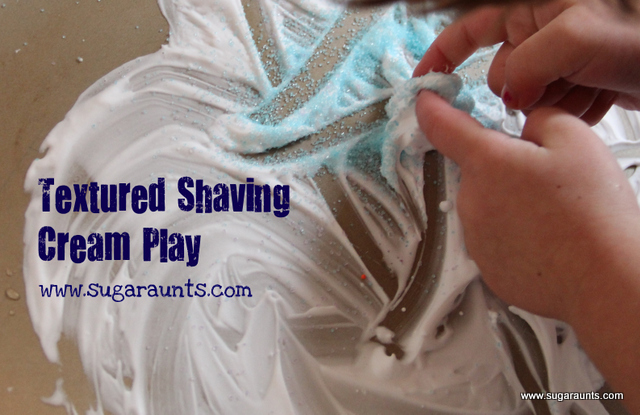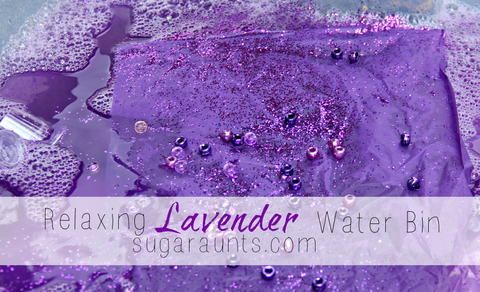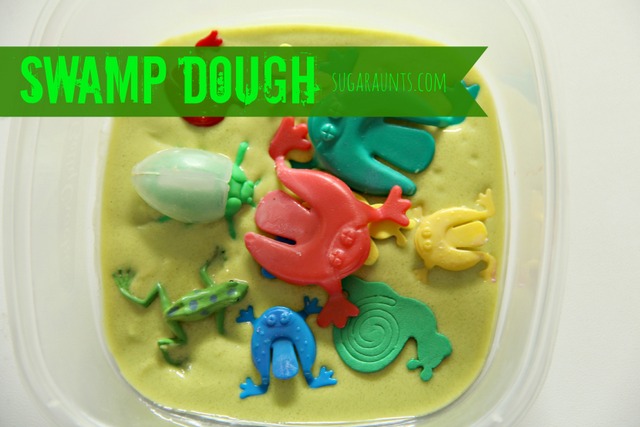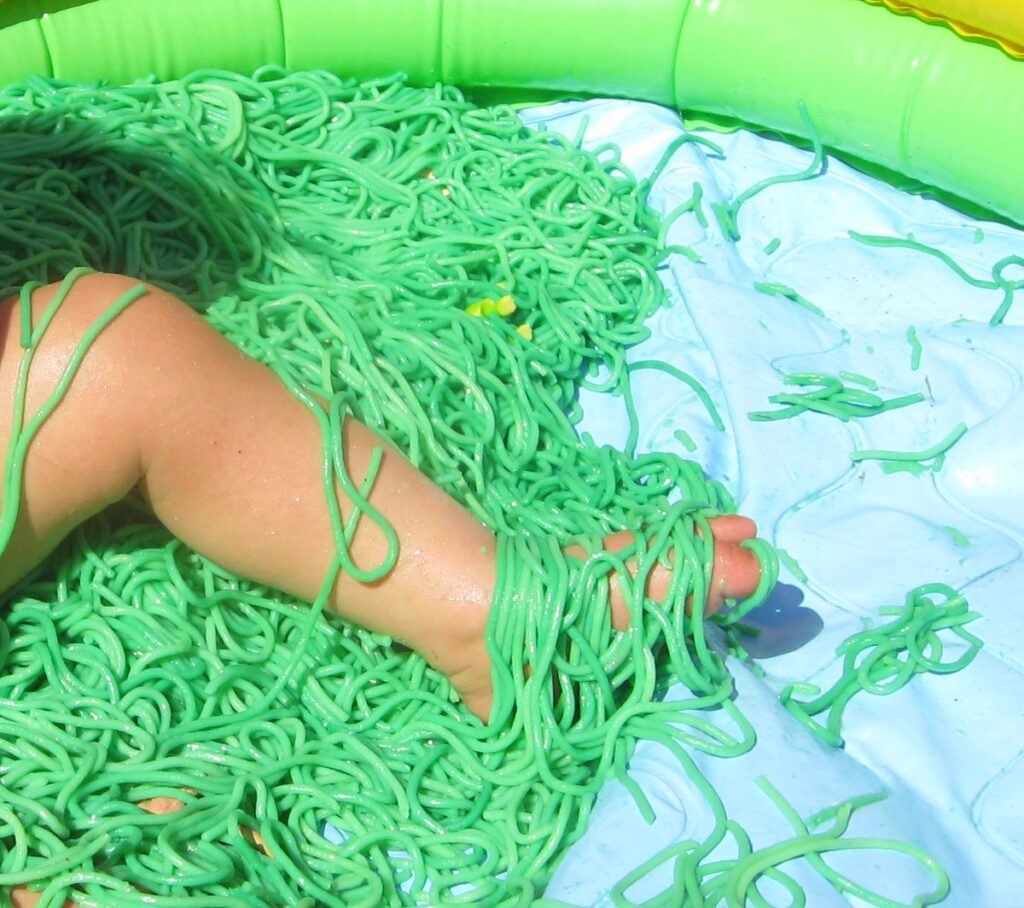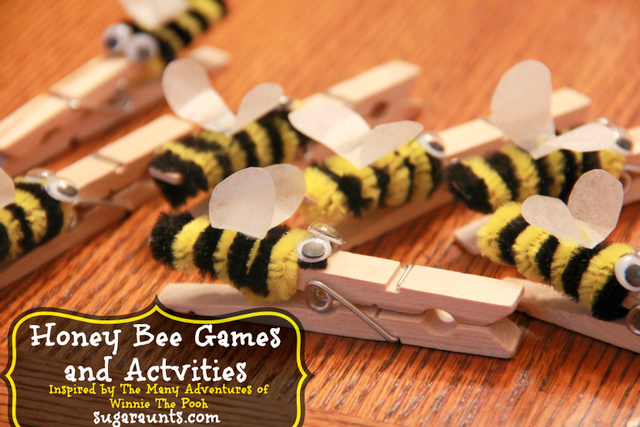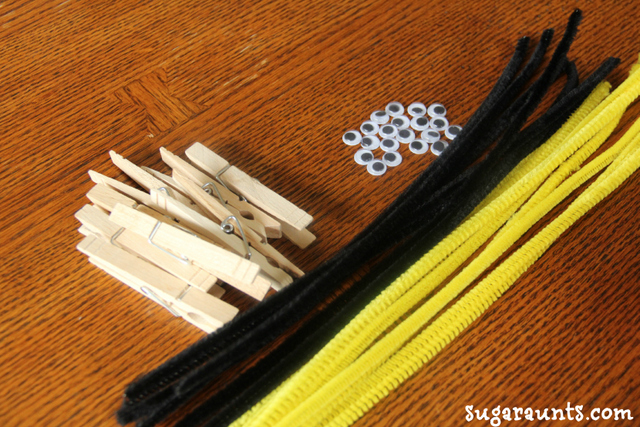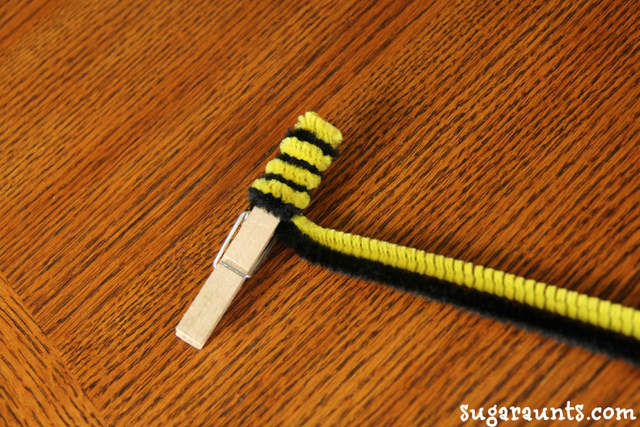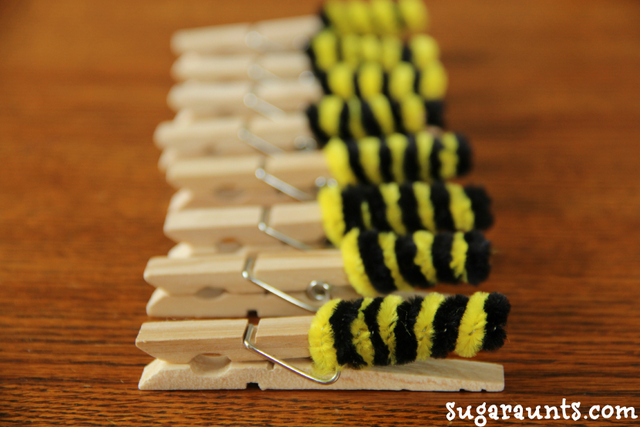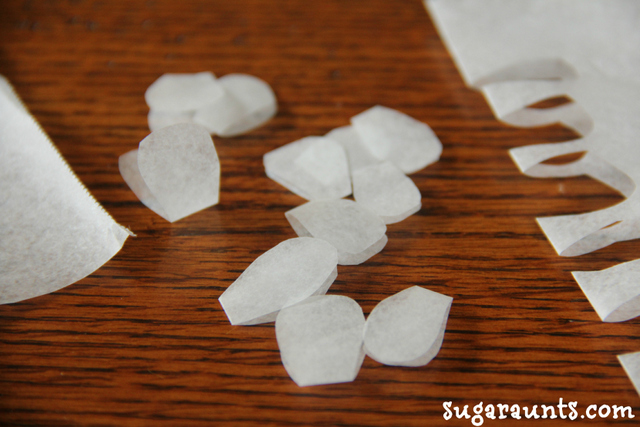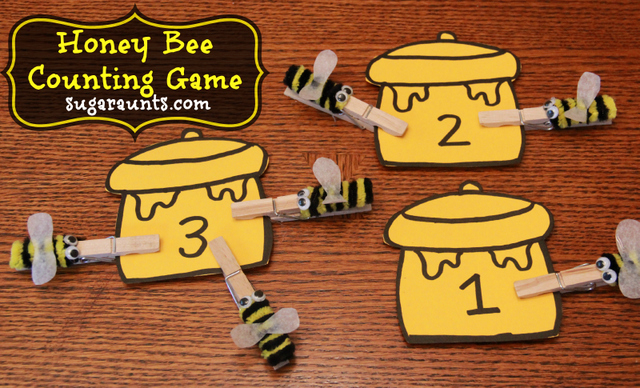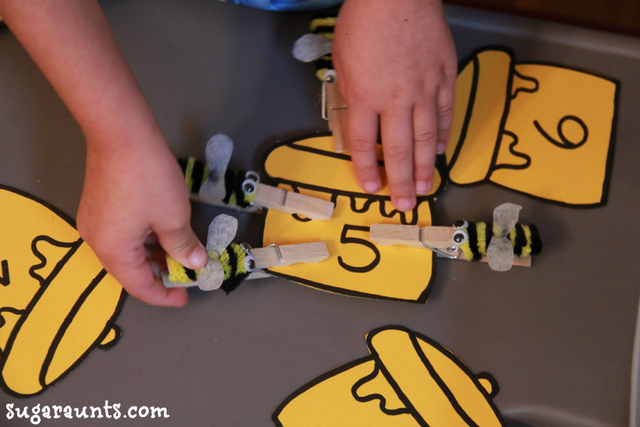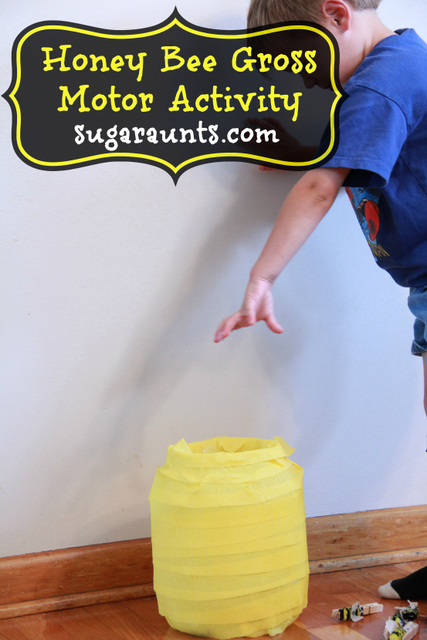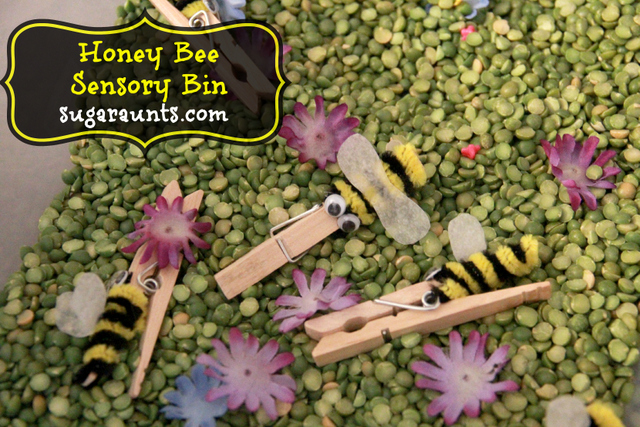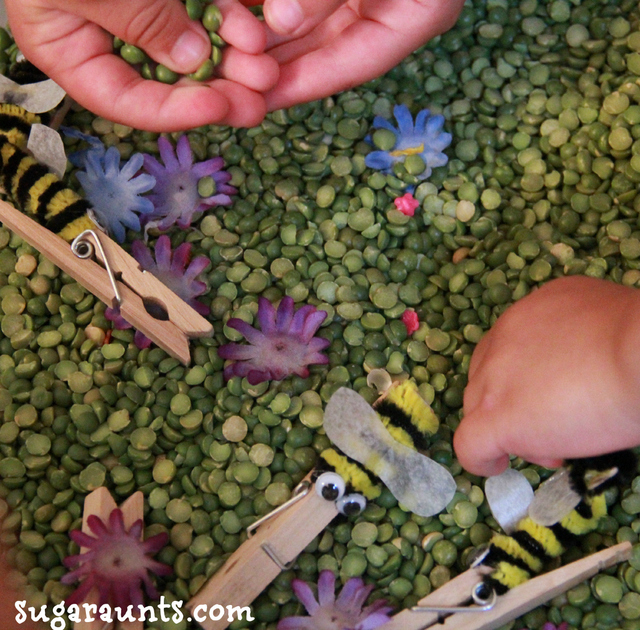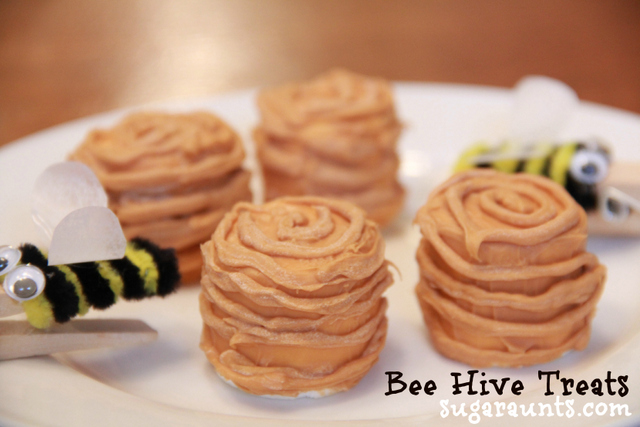During the Fall months, pumpkin-everything is all we see, hear about, and smell…so why not incorporate pumpkin sensory activities into therapy planning and play-based learning? These sensory-based pumpkin activities support development of motor skills and incorporate sensory processing in various ways, but there’s more to it: Using pumpkin sensory play is a fun way to integrate the environment during the Fall months using a therapy tool many may not have thought about: the pumpkin!
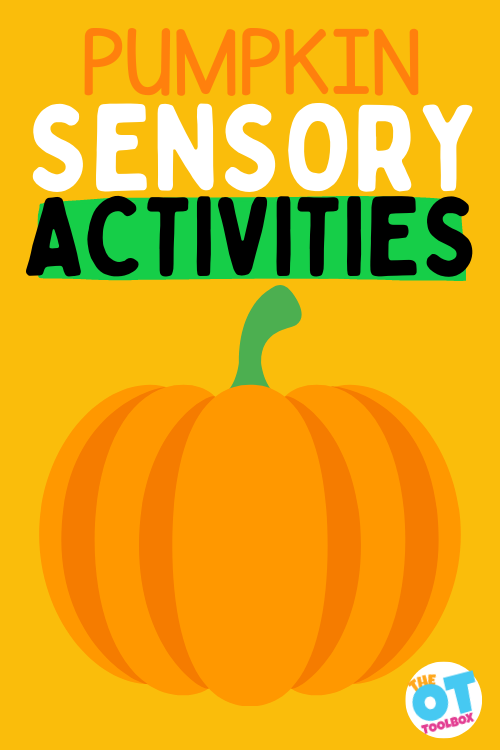
Pumpkin Sensory Activities
Fall…It’s a time of crunchy leaves, pumpkin-scented everything, shorter days, and a chill in the air. There are many senses associated with the season! Maybe that’s why it’s the perfect time of year to incorporate sensory experiences into daily activities and a formal or informal Sensory Diet designed to meet the needs of an individual.
Try adding the sensory based activities listed in this booklet right into your Fall bucket list this year. I’ve included many activities that are easy to incorporate into your day and family free time. Many families struggle to fine free time with work, school, sports, and weekend activities. Adding in much-needed sensory activities to a full day’s schedule can be difficult.
These fall activities are an easy way to challenge sensory skills, provide input needed for organization and regulation of the sensory systems. Using typical Fall daily activities can establish levels of sensory needs in ordinary ways.
When it comes to sensory seeking behavior and feedback, what helps one child might help others, though maybe in different ways. Use the ideas below to address the sensory systems while building on and developing functional skills, fine and gross motor development, coordination, balance, attention, and independence.
There are a few reasons why the average pumpkin is a great sensory tool:
- A pumpkin is a sensory tool anyone can use- Whether it be the home, the therapy clinic, or schools, one thing is for sure: You are likely to see a pumpkin in all of these places as a decoration during the Fall months.
2. Pumpkins offer many sensory options- Think about how heavy a pumpkin is. Picking up a pumpkin is just the beginning of the sensory input. Then there is the messy sensory experience with pumpkin guts. Pumpkin recipes offer another sensory experience. Pumpkin crafts, science experiences, and carving all offer different sensory options.
Let’s break down the various pumpkin sensory activities by sensory system.
Pumpkin Heavy Work
Heavy work offers calming proprioceptive input. This can be achieved by heavy work input through the body…picking up heavy pumpkins is one way to support this area. Another way is through deep breathing as it offers heavy work awareness through the mouth, lips, and chest.
Pumpkin Proprioception Sensory Activities
1. Move Pumpkins- Pumpkins are everywhere. Use pumpkins to address proprioceptive needs by having kids pick up and move pumpkins from place to place. Kids can pick their own pumpkin at a farm, carry their pumpkin to provide upper body proprioception input, strengthening, and addressing balance and coordination needs.
Heavy work is organizing and moving pumpkins can address sensory needs simply by picking up and carrying pumpkins.
Try these heavy work activities:
- Place pumpkins in a line
- Move pumpkins around the room or yard
- Place pumpkins in bucket, bag, or wagon
2. Pumpkin parade- Decorate pumpkins with stickers or paints and then carry them to deliver to friends or neighbors.
3. Pumpkin Rocks- Collect rocks of all sizes and weights. Use them to create pumpkin rocks by painting them orange and then painting on jack-o-lantern faces. Painting rocks is a very tactile sensory experience, using both hands together in a coordinated manner.
What makes this activity perfect for heavy work and addressing proprioception needs is playing with the painted pumpkin rocks after they are dry. Stack them, sort them, build with them, create small world sets, and decorate the front stoop with them.
4. Pumpkin Wagon Pull- Load a wagon full of leaves, sticks, corn husks, pumpkins, and even your pumpkin rocks to build a heavy work wagon pull activity.
Kids can pull the wagon over the lawn for heavy work through the whole body. Pull the wagon on flat sidewalks or driveways for less heavy work. Go on a family walk with your collections or set up an impromptu Halloween parade with kids in the neighborhood.
5. Pumpkin Deep Breathing Activities- One of our first deep breathing exercises we shared here on the site is our pumpkin deep breathing exercise. It’s a printable page that shows kids how to trace the lines of a pumpkin while breathing deeply. This is a great self-regulation strategy for coping needs.
Tactile Pumpkin Sensory Play
Pumpkins offer a great opportunity for the sense of touch. From messy pumpkin guts to the smooth pumpkin surface, there are many options for tactile sensory play.
1. Pumpkin Seed Scoop- Carving a pumpkin is an excellent sensory experience. When it comes to scooping out the pumpkin guts, kids can challenge their tactile sense by touching and moving the seeds.
For kids who are not able to tolerate this task, try using latex free gloves. Kids can also try pulling off the pumpkin’s seeds from the innards using tweezers.
Once the seeds are removed, allow kids to rinse the seeds in a colander and strain them into containers.
Use scoops and spoons of different sizes to address visual motor integration skills as they move and manipulate the wet seeds. Pinching individual seeds is an excellent fine motor task.
2. Pumpkin Bin- Address sensory needs by creating a sensory bin with a pumpkin theme. Use egg cartons to create pumpkins and place them in a sensory bin filled with field corn or rice. Here is an example of how to create this sensory bin.
3. Fall Texture Feel- Gather various textures from nature to create a multi- textural sensory experience. Use leaves, sticks, acorns, small pumpkins and gourds, or dry corn husks for kids to explore various textures.
4. Paint pumpkins– Painting pumpkins can be done to meet the needs and abilities of any individual and it’s a great Fall activity. Set up young children at the water table like we did to paint rubber ducks using water colors. Or, paint pumpkins and add details like feathers, sequins, beads, and gems.
This Pumpkin Ice Painting by Crayon Box Chronicles is another painting idea for pumpkins.
Pumpkin sensory bins
Pumpkin sensory bins offer so many sensory experiences. Make them a messy sensory play or dry tactile sensory input, and you can address fine motor, visual motor, tactile, tool use, and much more.
Add a dry or wet sensory bin base, a container, scoops, pumpkin materials, and items to explore.
- This Halloween Sensory Bin is one option for scooping and pouring with a pumpkin theme.
- Another idea is to use dry rice and small pumpkin containers like in this Pumpkin Rice Sensory Bin by Munchkin and Bean.
- A Halloween Sensory Table can be set up on a play table like a train table. Use the items you have in the home to support tactile sensory exploration.
- This Pumpkin Sensory Bin uses dry corn and pumpkins made from egg cartons for sensory play.
Pumpkin Visual Sensory Play
- Color Assessment- Use a magnifying glass to explore the colors of leaves, tree trunks, and nature finds while out on a nature hunt. Kids can look for each color of the rainbow in a scavenger hunt type of activity. This fall activity builds visual scanning needed for reading and writing.
2. Pumpkin Seed Colors- Use dry seeds from a pumpkin to create colorful seeds using liquid food coloring or liquid water colors. While these seeds won’t be edible, they are great for creative play! Use the seeds to sort, manipulate, and create in Fall themed learning and play or artwork.
3. Pumpkin Sensory Bag- A sensory bag is a great way to incorporate sensory experiences and fine motor play. Simply fill a plastic bag with gel or soapy water. Then add materials like pumpkin seeds, sequins, food coloring, etc.
Kids can move the material around with their fingers to find hidden objects in a seek and find sensory bag or even write letters like we did with this window sensory bag.
Scented Pumpkin Sensory Activities
1. Pumpkin Puree Touch and Smell- Grab a can of pumpkin puree from your grocery store and use it to challenge the sense of smell. Ask kids to dip a craft stick into the pumpkin and smell the craft stick. You can use several craft sticks that are scented and unscented.
Kids can pull one craft stick at a time from a jar and determine if it is a pumpkin stick or not. Do this activity blindfolded so that kids don’t see the stained craft stick.
2. Pumpkin Spice Painting- Use pumpkin spice seasoning to create a scented sensory paint. Mix the seasoning with flour and water to create a finger paint mixture.
Color can be added with liquid water colors or food coloring. Once your child has created a painting, pop it into the microwave for a few seconds to create a puffy paint creation.
Pumpkin Taste Sensory Activities
Pumpkin Cooking with Kids- Use pumpkin puree to create all kinds of taste experiences with cooking with kids activities. Add pumpkin to brownies, granola, or oatmeal for a taste experience while discovering new flavors.
How many ways can you think of to incorporate pumpkins into sensory play? Just cutting into a pumpkin to carve a jack-o-lantern is such a sensory experience in its self.
Pumpkin Sensory Motor Activities
In our Pumpkin fine motor kit, you’ll find pumpkin theme activities to improve not only fine motor strength and dexterity, but sensory motor play activities. These include pumpkin play dough mats, interactive pumpkin mazes, pumpkin visual processing activities, lacing cards, I Spy pages, and so much more.
Grab a copy of the Pumpkin Fine Motor Kit to jump start sensory play this Fall!
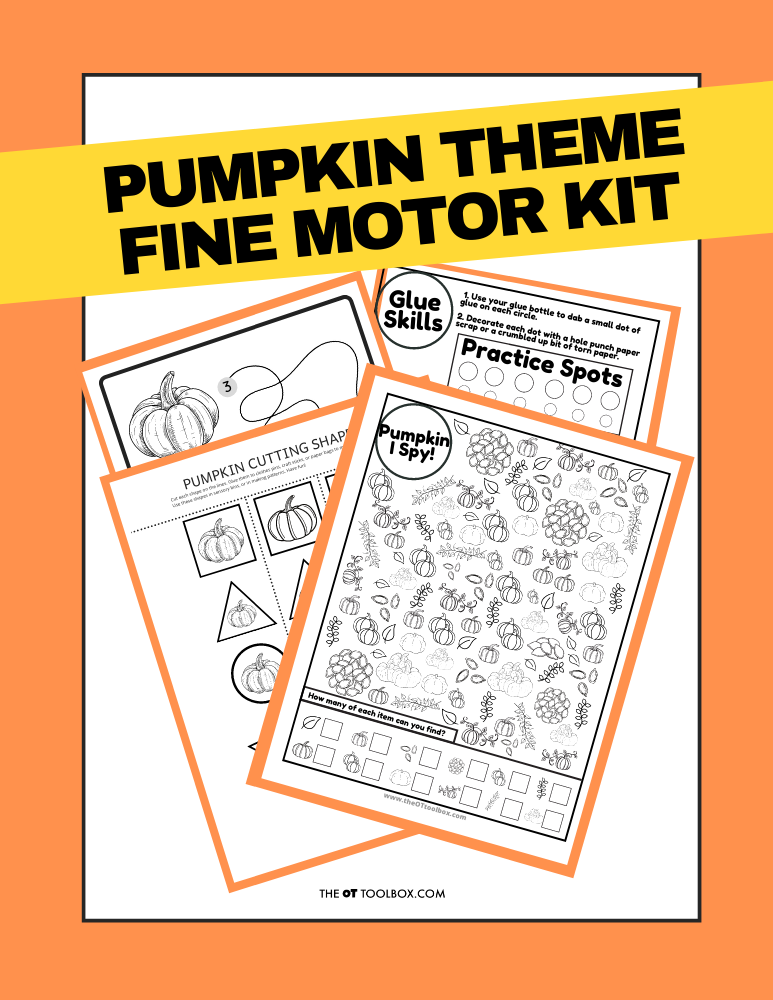
Grab the Pumpkin Fine Motor Kit for more coloring, cutting, and eye-hand coordination activities with a Pumpkin theme! It includes:
- 7 digital products that can be used any time of year- has a “pumpkins” theme
- 5 pumpkin scissor skills cutting strips
- Pumpkin scissor skills shapes- use in sensory bins, math, sorting, pattern activities
- 2 pumpkin visual perception mazes with writing activity
- Pumpkin “I Spy” sheet – color in the outline shapes to build pencil control and fine motor strength
- Pumpkin Lacing cards – print, color, and hole punch to build bilateral coordination skills
- 2 Pumpkin theme handwriting pages – single and double rule bold lined paper for handwriting practice
Work on underlying fine motor and visual motor integration skills so you can help students excel in handwriting, learning, and motor skill development.
You can grab this Pumpkin Fine Motor kit for just $6!




Colleen Beck, OTR/L has been an occupational therapist since 2000, working in school-based, hand therapy, outpatient peds, EI, and SNF. Colleen created The OT Toolbox to inspire therapists, teachers, and parents with easy and fun tools to help children thrive. Read her story about going from an OT making $3/hour (after paying for kids’ childcare) to a full-time OT resource creator for millions of readers. Want to collaborate? Send an email to contact@theottoolbox.com.




Colleen Beck, OTR/L has been an occupational therapist since 2000, working in school-based, hand therapy, outpatient peds, EI, and SNF. Colleen created The OT Toolbox to inspire therapists, teachers, and parents with easy and fun tools to help children thrive. Read her story about going from an OT making $3/hour (after paying for kids’ childcare) to a full-time OT resource creator for millions of readers. Want to collaborate? Send an email to contact@theottoolbox.com.


















